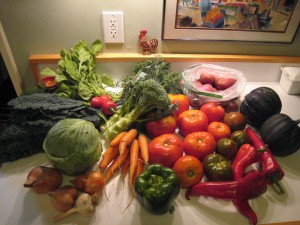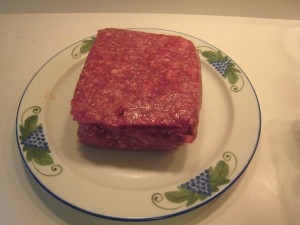Tag: New York Times’
A Pill for Austism?
- by KitchenPantryScientist
Sandwiched between oil spills and militant lairs in the paper this morning, I found hope for millions of people.
The New York Times reported that a new drug therapy offers hope to children and adults suffering from a relatively common genetic flaw that causes autism and mild to severe retardation. According to the article, one child in five thousand is born with Fragile X Syndrome, which is the most common inherited cause of mental retardation. (Down Syndrome is not inherited.) Fragile X patients appear to experience an overload of brain signalling and the drug, manufactured by Novartis, appears to help by slowing down this excessive talk between brain cells. Researcher hope this will allow patients to form memories, learn and develop more normally. If further studies bolster these initial trials, performed in adults, the drug may also hope for patients with autism not caused by Fragile X. “This is perhaps the most promising therapeutic discovery ever for a gene-based behavioral disease,” said Dr. Edward M. Scolnick.
Amazing.
Under Pressure: Antibiotics and Adaptation
- by KitchenPantryScientist
For centuries, people have harvested corn by hacking it off, six to fifteen inches above the ground. A caterpillar called the corn borer appears to have adapted its behavior to the corn harvest by travelling back down the stalk to a safe height, before spinning its cocoon. This week, the Science Times reported on a study that suggests that, by descending to the bottom of the stalks, the bugs avoid being chopped off when the corn is harvested. Researchers at McGill University think that “over generations, those caterpillars that did not descend, or did not go down far enough, did not survive.” In the article, Dr. Calcagno suggests that the likeliest explanation for this behavior is the selection pressure of harvesting over generations. In other words, only the caterpillars that crawled down survived to reproduce and make baby bugs, until only caterpillars with the family trait of crawling down remained in the population.
Similar forces are at work on bacteria that live in animals and humans, only instead adapting to harvest, they’re adapting to constant exposure to antibiotics. As a result, many harmful bacteria are finding ways to “outsmart” antibiotics. This is, in part, due to the mind-boggling volume of these drugs fed to animals produced for food. I can’t give you a number, because according to the Center for Disease Control’s website, the amount of antibiotics fed to farm animals is not available to the public or to government agencies.
Feeding animals antibiotics helps them grow. No one knows exactly why. Unfortunately, using these drugs as growth enhancers, or even to protect them from disease, often creates antibiotic-resistant strains of bacteria that have the potential to end up in our food supply. These drug-resistant pathogens are especially dangerous to people who live and work on farms ( just ask Russ Kremer, who was gored by one of his hogs and nearly died from an antibiotic-resistant infection.) In reponse to the global threat presented by antibiotic resistance, the World Health Organization recommended that antibiotics used in humans should not be used to promote growth in food animals.
Healthy animals occasionally need to be treated for infections, but feeding animals antibiotics for growth benefits is a risk no one should be taking. A huge amount of money is spent each year on these drugs so producers can get top dollar for their animals. My worry is that the additional costs to public health are not being considered, especially if our pharmaceutical arsenal is rendered useless by this practice.
Want to learn more? You can check out the CDC’s website for a wealth of information on antibiotic resistance. Their program “Get Smart on the Farm” promotes appropriate antibiotic use in animals.
Words That Made a Difference
- by KitchenPantryScientist
Congratulations to Michael Moss, of the New York Times, for winning a 2010 Pulitzer Prize for his expose “The Burger That Shattered Her Life.” According to the New York Times, his reporting on the ground beef industry “led the Agriculture Department to review it’s safety procedures and a major slaughterhouse and food retailer to agree for the first time to test raw ingredients that would go into ground beef.”
I remember reading his work and being shocked to learn that many ground beef producers wouldn’t sell to retailers who wanted to retest their meat for E. Coli contamination. The system still isn’t perfect (see my post on ground beef additives,) but at least someone is listening.
This Week in Science and Health
- by KitchenPantryScientist
I found lots of interesting tidbits in today’s Science Times!
In science news, my son was fascinated to learn that ABE, a pioneering undersea robotic explorer, appears to have implodedunder about 10,000 feet of water while searching for hydrothermal vents in the sea of southern Chile. We also read that “Fearless Felix” Baumgartner is going to jump from a helium balloon in the stratosphere, 120,000 feet above earth in an attempt to be the first skydiver to break the speed of sound.
In health news, The Science Times today tells us that a study showed that when soda prices went up, consumers health improved. (Not that surprising, really.) There was an interesting article about new research showing that taking an anti-inflammatory related to aspirin helped Type 2 diabetes patients manage their disease and even lower their blood sugar. This seems to be further evidence that inflammation plays a role in diabetes. There is also a good article about Dr. Thomas Frieden,the new director of the Centers for Disease Control and Prevention in Alanta. I was happy to read that he’s reorganizing the agency to give scientists better access to top leadership and popping into research labs on a regular basis to see what’s going on.
Diet vs. Supplements
- by KitchenPantryScientist

In today’s Science Times, Jane Brody tells us that it what we eat, rather than the supplements we take, that can help us live longer, healthier lives. She claims that eating a mostly plant-based diet with plenty of good fats (i.e. the Mediterranean diet), along with plenty of exercise, seems to be the key to lowering your risk of several types of disease. Read the article at http://www.nytimes.com/2010/01/12/health/12brod.html?ref=science . (Even if you’re not vitamin-takers, it is important to make sure that you and your family get plenty of calcium and vitamin D, through supplements if necessary, and keep in mind that you should always follow your pediatrician’s recommendations.)
Dog Food Anyone?
- by KitchenPantryScientist
First of all, I have nothing against real ground beef. That is, I will eat beef that has been ground by my local butcher or trusted grocer. I love a good burger.
However, starting today, I refuse to eat ground beef from an unknown source (i.e. fast food restaurants and big chain grocery stores.) Not only does the ground beef industry refuse to allow retesting of their meat (they won’t even sell it to stores who retest it,) I just read that one company is taking parts of cow that are considered unusable, treating the beef “trash” with ammonia gas to kill harmful bacteria that tend to contaminate those cow parts, and selling it to be mixed with higher quality ground beef to make it cheaper for restaurants and schools (yes, schools!) This disgusting meat product, which doesn’t list ammonia as an ingredient, although it remains following treatment, may still harbor dangerous bacteria. It’s unbelievable.
I’m not touching ground beef from an unknown source or letting my kids eat it until the beef industry and the U.S.D.A get their act together. I’d suggest you do the same. Maybe if we all boycott their substandard, potentially dangerous product, they’ll stop trying trying to feed us beef products that used to be made into dog food.
For a more complete story, read today’s New York Times article at http://www.nytimes.com/2009/12/31/us/31meat.html?_r=1&hp

